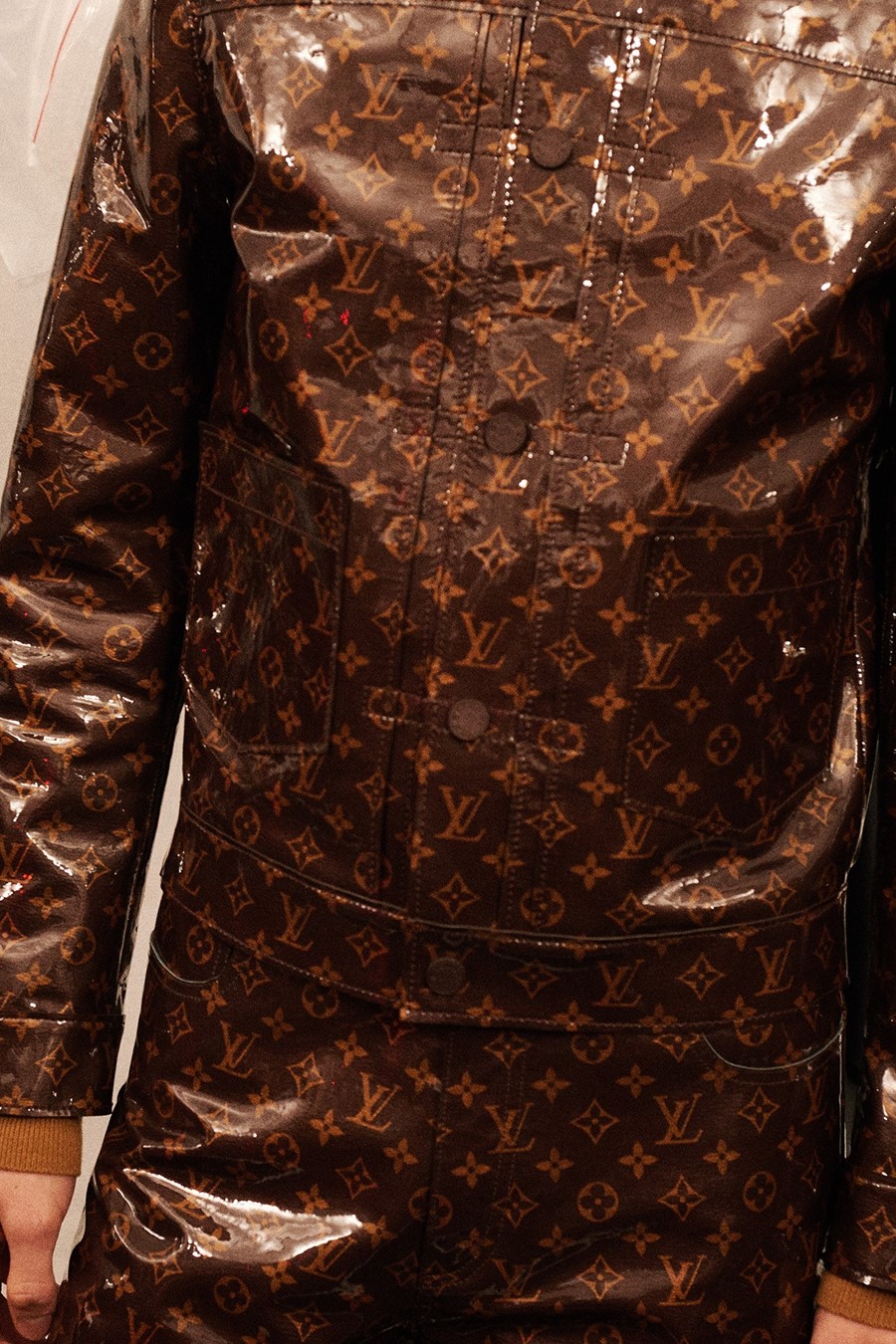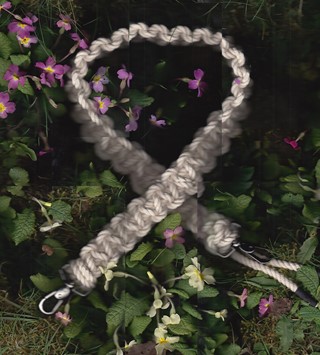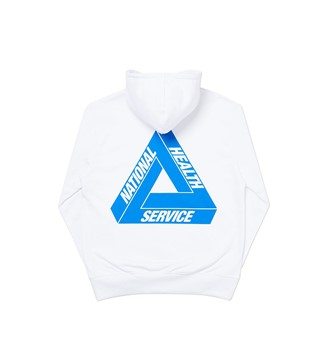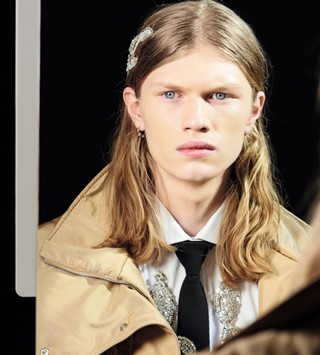A Final Ovation for Kim Jones at Louis Vuitton
- TextTed Stansfield
Kim Jones’ last show for the house marks the end of an era – here, we speak to the designer about leaving Vuitton and his final collection
It’s the day before Louis Vuitton’s men’s Autumn/Winter 2018 show and its Artistic Director of Men’s Collections, Kim Jones, has just announced his departure. Tomorrow’s show will be his last for the house. We’re at Louis Vuitton’s headquarters on Pont Neuf, Paris and the studio is in the flurries of show preparation, while Jones is being inundated with flowers and visitors wishing to congratulate him on his tenure. Understandably, he’s feeling emotional.
“Seeing the comments… I’ve been in tears a lot today… It’s not an easy thing...” he says. “This was my dream job when I was at college and I got it ten years exactly after I left, so to leave it.... We’re really on a high.”
Jones’ Louis Vuitton adventure began in 2011, when he was appointed Men’s Style Director by then Artistic Director, Marc Jacobs. He’d trained at Central Saint Martins (under the tutelage of Louise Wilson) and, after John Galliano bought his graduate collection, he launched his own label, continuing it for four years before joining Dunhill as Creative Director. Then along came Marc, who thrust him into the helm of Vuitton’s rapidly expanding men’s line. Seven years later, his tenure has come to an end.
“I am very proud of those seven years. It’s done extremely well for the company and [they] really appreciate that,” he says. “I want to go out in style and I want the brand to look as good as possible. I think it’s a really nice way to end.”
Which brings us to today, because go out in style he did.
***
Staged at the Palais Royal, Jones’s swansong was a celebration; a party not a funeral, soundtracked by an uplifting mix by Honey Dijon, which featured quotes from Jennie Livingston’s Paris Is Burning (1990). He brought some of his favourite models back for the occasion – Andrew Westermann, David Trulík and Dominik Sadoch, who he calls friends of the house – as well as supermodels Kate Moss and Naomi Campbell who modelled matching monogram patent leather jackets (sparking applause as they stepped out onto the runway). “I had to walk out at the end and do a full lap because it’s the last one, but I don’t like doing it so I asked them if they’d do it with me,” he says of his decision to include them in the show. “They’re both very loyal, lovely people so it was very nice.”
The collection itself was a tour de force of Jonesisms.
The designer’s work for Louis Vuitton, itself built around the precept of travel, has been marked by its references to other countries and cultures, which have ranged from New York (A/W17) to the Omo Valley, Ethiopia (S/S17); Paris (A/W16) to Tokyo (S/S16). This season, he looked to the Wild West and northern Kenya. “It started off by looking at a rodeo,” he explains. “I was in Jackson Hole, Wyoming, and there were these kids that catch the horses or the cows that people fall off, and they were wearing a mix of Western-wear and sportswear.” That mix comprised of technical leggings with big shorts, cowboy boots and cowboy hats and football jersey tops, apparently, which went on to inspire the collection.
Kenya, on the other hand, came through by way of prints: volcanoes, river deltas and amazing landscapes captured by a friend of Jones’. “The prints came from flying over Kenya in a helicopter. After they were published on the Another Man website, we [made them into] prints because they were just so beautiful. I thought it was nice to look at the Earth from above because we’re constantly talking about travel at Vuitton.” Only Jones could combine American cowboys and Kenyan landscapes and make it look cohesive. And as always, these references were subtle, not obvious; authentic, not contrived.


The fabrication of these garments was spectacular. This season featured fake shearling made from cashmere and silk (because why not?), silver ponyskin resembling metal, laser-cut python bonded to jersey, and lacaune sheep skin (softer than regular sheepskin) needle-punched into cashmere, giving it a watermark effect. The innovation, craftsmanship and sheer luxuriousness of it all was astounding.
As well as giving subtle nods to previous Louis Vuitton collections (such as the fluorescent yellow bags Marc Jacobs showed for Spring/Summer 2001), the collection references his own design past. “It is quite Kim Jones,” he remarks, “and it goes back to what I did at the beginning of Vuitton too… It is quite personal, but when you do personal things at big houses, people respond to it, because they’re not used to that. And I think that’s when designers get recognition.
Jones’ practice is personal, but it’s also highly collaborative. While he’s only done four ‘official’ collaborations during his seven years at Vuitton – with Jake and Dinos Chapman, the family of Christopher Nemeth, Hiroshi Fujiwara of fragment design and, of course, Supreme – he’s involved a huge number of people in his work for the house. This was illustrated by the Instagram post announcing his departure, in which he thanked nearly 60 people. “Collaboration is everybody you work with,” he stresses. “I like to work with people, I like to talk to people. Every intern that comes into the studio, I want to know what they’re interested in, what they’re feeling, because they see things that you don’t see. If you don’t ask them questions you don’t learn, and I like to learn.”


But what are his reflections on his time at Vuitton? “I’ve had an incredible time here. I’ve had the opportunity to work with and for people who have let me do what I do to make it work. I think the more freedom they’ve given me, the more successful it’s become. And I think that’s a really important thing as a designer. It’s always a nice thing to get a good reception from people and people love it. It’s a really important thing for me, and that has been great.”
Ultimately, though, the positive reception is down to Jones’ skills as a luxury men’s designer – his taste levels combined with his streetwear sensibility and his knack for mixing the high and the low (see: laser-cut python bonded to jersey) allows him to create clothes that men desire. And that’s his modus operandi. “I know how many people buy it and how many people want it and that’s what’s important to me,” he says. “There’s nothing nicer than seeing someone you don’t know wearing your clothes. That’s the best feeling.”
As Jones came out to take his final bow, walking hand-in-hand with Kate and Naomi and looking a little choked-up, he was met with thunderous applause and a standing ovation. It was an emotional moment; a very happy ending to a remarkable fashion story.




















